These Middle Eastern spices, spice blends and pantry items are essentials to have on hand to make Mediterranean recipes at home!

When you’re new to Middle Eastern cuisine and you find a recipe that you want to make, it can be difficult to find a local source for some of the ingredients. In addition to that, you may not even know what some of those ingredients are.
If you can relate, this resource is definitely for you! Bookmark this page and refer to it whenever you need information on a specific Middle Eastern spice or condiment.
How to Convert Whole Spices to Ground Measurements
Allspice: 1 teaspoon allspice berries = 1 teaspoon ground allspice
Black pepper: 1 teaspoon peppercorns = 3/4 teaspoon ground pepper
Cardamom: Approximately 12 pods, dehusked = 1 teaspoon ground cardamom
Cinnamon: One 1 1/2-inch (4-centimeter) stick = 1 teaspoon ground cinnamon powder
Coriander seeds: 1 teaspoon coriander seeds = 3/4 teaspoon ground coriander
Cumin: 1 teaspoon cumin seeds = 1 teaspoons ground cumin
Fennel: 1 teaspoon fennel seeds = 1 teaspoon ground fennel
Mustard seeds: 1 teaspoon mustard seeds = 3/4 tsp ground mustard
Nutmeg: 1/2 nutmeg = 1 teaspoon ground nutmeg
To use ground spice instead of whole spice, the most straightforward conversion is to use about three-quarters as much ground as you would whole. If a recipe calls for a teaspoon of whole coriander, use ¾ teaspoon of ground coriander. There are, of course, factors to take into consideration.
Ball-shaped spices, like round peppercorns or coriander seed, don’t sit neatly in a stack in your measuring spoon. There are pockets of space between them. If you were to break them up, they would take up much less space, hence the idea of ¾ teaspoon ground spice for each teaspoon whole.
Smaller spices, like cumin or caraway, lay much more neatly together in a measuring spoon, so there is less space between the seeds. These spices come closer to a 1:1 ratio.
Source: spiceinc
Dried vs Canned Beans
Typically if a recipe calls for 1 cup dried chickpeas, which are soaked overnight and cooked, you can easily substitute 2 – 15 ounce cans of chickpeas (garbanzo beans).
NOTE: Whenever possible, we also include links to online sources where you can buy the ingredients. Some of them are Amazon affiliate links. This means, there is no difference in your cost to buy them, but we receive a small commission for your purchase. This helps us to keep creating recipes for you to make, so thank you for your support! For more information, see our privacy policy.
Favorite Middle Eastern Spices
Buy the spices whole, then grind. Also, make small batches to extend the shelf life.
(data source: lots of research, taste testing and from a few favorite sites Sweet Pillar Food, Bon Appetit, Seasoned Pioneers)
Ajowan Seeds
These seeds are actually a fruit and also go by the names Ajwan and Ajman, too. Their aroma is that of thyme and their pungent, bitter taste is like a cross between fennel and oregano. The flavor is strong and startling when eaten raw (which I don’t recommend).
Though it looks like a seed, it is technically a dried fruit. Each tiny seed has a huge amount of thymol in it, and this gives it a flavor a bit like thyme, but several times stronger. Using carom in breads is common throughout India.

Aleppo Pepper
Originates in Aleppo, Syria and is only grown in two main areas of Syria and Turkey. Aleppo pepper are pods that ripen to a burgundy color and when semi-dried, are coarsely ground.
Unlike crushed red pepper, the flakes of Aleppo pepper contain no seeds, which allow sit to be mild in heat. It has a mild, fruity, raisin-like flavor and cumin-like undertones, with a hint of saltiness.

Anise Seeds
Anise seed is used either ground or whole. Despite its similar name, anise is not related to star anise. Anise is not the same thing as fennel either. Although the two do have a similar flavor, and the plants are somewhat similar looking.
Anise and fennel are from the same family of plants (along with caraway, parsley, cilantro, and others), but they are different species. The seeds lend a licorice flavor to baked goods.
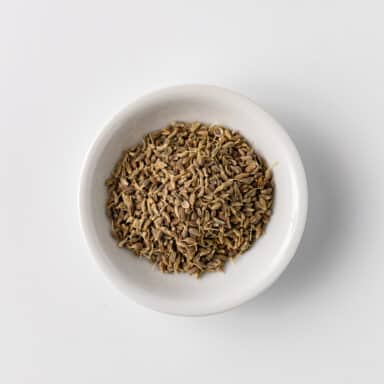
Cardamom
A sweet and aromatic spice, is a must-have for desserts and is equally critical for main and rice dishes. When using the whole pod, it should be removed before consuming the dish.
And for desserts, discard the outer pod and use a mortar and pestle to grind the seeds into a coarse powder.

Clove
If you’ve ever cooked an easter Ham, you know cloves. They’re strong. Add too much, and you will overpower other subtler flavors. These aromatic flower buds are harvested from the evergreen clove tree.
They lend a slightly sweet yet pungent aroma to Middle Eastern cuisine. You’ll often find cloves paired with cinnamon and black pepper for a perfect spice blend.
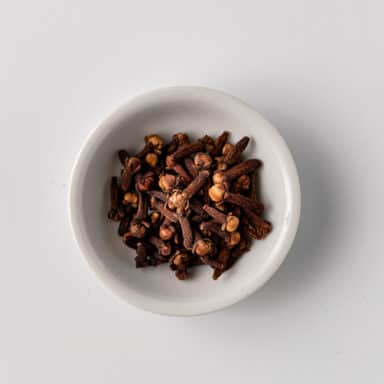
Coriander (Seeds/Ground)
This versatile spice has a hint of citrus and adds earthy notes dishes. The whole seeds are lightly toasted and then ground with other spices for several popular spice blends.
Ground coriander is popular because it adds texture to dishes and can be tasted with each bite. Coriander is often paired with cumin for just the right flavors of earthiness.

Cumin
Cumin adds nutty, warm flavors and dimension to countless dishes. Whole cumin seeds can be added to tadka, and roasted and ground cumin is great for adding later in the cooking process.
Cumin adds an earthy tone and body to soups, vegetables and main dishes.

Fenugreek seeds
Small mustard- yellow seeds usually dry-roasted or fried in oil or ghee to reduce the bitterness.
This bittersweet spice has an undertone of maple syrup and works really well with coriander, cumin, and red chile powder.

Mahlab (Mahalab)
Originating centuries ago from the Middle East region, it is made from the seeds of the Mahaleb or St. Lucie cherry. The seeds are extracted from the cherry pits and ground to a powder.
It is reminiscent to a combination of bitter almond and cherry, and similar to marzipan. Mahleb is used in small quantities to enhance the flavor of sweets and baked goods.
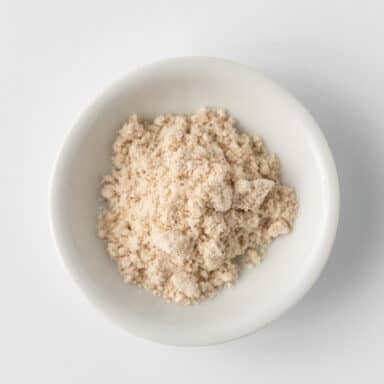
Mastic
It is a resin from the hardened sap of a tree. They form in pea-like drops similar to tears, with a crystalline texture.
Mastic is used in ice cream, puddings and milk based desserts and drinks and it is key in giving Nabulsi cheese its unique flavor. It is also commonly added to baked goods such as maamoul.
It is used in chewing gum, to freshen breath, in some liquors, as well as Turkish delight and other Middle Eastern sweets, breads, pastries and ice cream. Gives a cedar like taste that purifies the breath.

Mint
The leaves (fresh or dried) render a warm, fresh, aromatic, sweet flavor and deliver a cool aftertaste which is used in making tea, beverages, jellies, syrups, ice creams and candies.
Mint flavored tea is quite popular and also widely relished in India, Middle Eastern, Arabian and African countries.
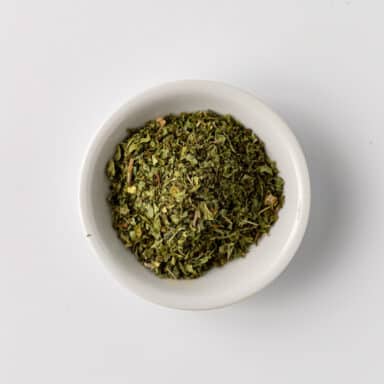
Nigella Seed
Often times these are called black onion seeds, but are not even from the onion family. There are two different spices that can be called “black cumin.” Nigella sativa looks almost like large pepper seeds, and can be eaten straight from the package or cooked.
Originally from South Asia and the Mediterranean, black cumin seeds also in India, Pakistan, and Afghanistan.
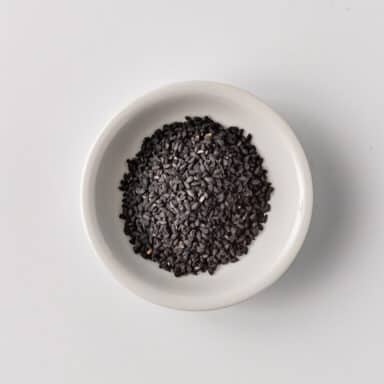
Dried Rose Petals
Rose Petals are a striking fuchsia color. They have a delicate, floral aroma with aromatic, sweet notes. They work well in both sweet and savory dishes.

Saffron
A must-have spice for Middle Eastern desserts, saffron, a crimson stigma from the saffron crocus, must be handpicked. Grown in the Kashmir Valley, it takes hundreds of thousands of stigma to produce a pound of saffron, making it the most expensive spice in the world.
Saffron adds an intense aroma, a floral flavor, and a gorgeous golden color to rice and main dishes as well as desserts.

Sumac
The brick-red finely ground berries of the sumac shrub give an astringent, lemony brightness to whatever they touch. It is used a great deal in Arabic cooking as a souring agent for meats, stews and dressings.
This is fantastic sprinkled over hummus or grilled meats.

Urfa Biber
These dark Turkish chile flakes have a smoky-sweet flavor with a mellow heat. The spice, also known as Isot Pepper, is cultivated in the Urfa region of Turkey.
It has a smoky raisin-like taste. Traditional uses are for seasoning meats. It is considered less spicy than many other chili pepper varieties, but has a longer lasting heat.

Zaatar (Zahtar, Za’atar )
A highly versatile, herbal mix of spices including toasted sesame seeds, sumac and thyme. It is known to have an herbal, citrus, nutty flavor. The spice mix is used for roasting poultry, fish and vegetables. It can season eggs, grains and salads or flavor marinades, dips and dressings. I make my own zaatar spice blend, give it a try!
Throughout the Middle East, Zaatar is enjoyed with bread but Arabic regions use the spice mix differently. Some mix with oil and spread over flatbreads, while others add it to the dough and bake.
Said to have its origins in ancient Egypt, Zaatar is also extremely popular in Palestine, Syria, Lebanon, Jordan and Turkey. Depending on the region, the mix takes on slightly different forms. In Palestine, they include caraway seeds and dried thyme leaves and the mix has a brighter green color. Meanwhile, in Lebanon, they include sumac, which gives it a deep reddish color. In Syria, they use a combination of dried ground thyme and sumac, which gives it a brownish coloration.

Honorable Mentions – Spice Blends
Baharat
Baharat is a finely ground spice mixture made with paprika, black pepper, cinnamon, coriander, cumin, cardamom and other warm spices. I make my own baharat spice blend, give it a try!
This all-purpose spice blend literally means “spice” in Arabic. It is used to season all meats, poultry and fish and can be used in soups and stews.

Berbere (North African)
One of my all-time favorite spice blends! The aroma is intoxicating! Made with fenugreek, allspice, red pepper, ginger, chilies, coriander, cinnamon, black pepper and more it has spicy, sweet, smoky and citrusy notes. I make my own berbere spice mix, give it a try!
Berbere, is a spice mixture that originates in the cuisines of Ethiopia and is great used in slow-cooked stews, lentils, beans, and marinating with oil rubbed all over meat.

Ras el Hanout (North African)
Ras-el-Hanout can often have no less than fifteen herbs and spices that are roasted and mixed by hand. The spice mix contains warm, sweet flavors of cinnamon, cloves, mace and nutmeg. I make my own ras el hanout recipe, give it a try!
The addition of cardamom, coriander, allspice adds zest and zing to the blend. Whole rose petals and lavender are added at the end to impart pleasant, floral notes.
Passed down from generations, the highly esteemed Moroccan blend Ras-el-Hanout translates from Arabic to ‘Top of the Shop’ and there are a variety of combinations of spices that vary in different proportions depending on the region.
Ras-el-Hanout is known as the essential tagine seasoning. The aromatic, complex flavors work well when stirred through boiled rice and couscous or rubbed into lamb.

Condiments
Tahini
Tahini is a nutty condiment made from toasted ground hulled sesame seeds. It can be served by itself and is a major ingredient in my mediterranean hummus, Mutubal, baba ghanoush, and halva.
Tahini is used in the cuisines of the Levant and Eastern Mediterranean, the South Caucasus, as well as parts of Northern Africa.
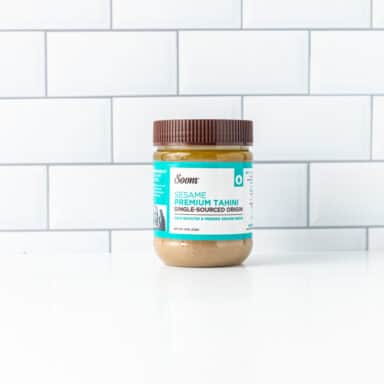
Rose Water
Infused with orange blossoms or Damascus rose petals, the best rose water brands are delicate and should remind you of fresh flowers rather than potpourri.
Rose water is a flavored water made by steeping rose petals in water. It can be added to jellies and syrups, and it is often sprinkled over cakes and milky puddings. I use it in my qatayef (sweet stuffed pancakes).

Orange Water
Infused with orange blossoms or Damascus rose petals, the best orange water brands are delicate and should remind you of fresh flowers rather than potpourri.
Used in desserts and sweets such as Egyptian Basbousa cake or Moroccan rice pudding, you’ll also find it adding a depth to braises like lamb and other savory dishes.

Pomegranate Seeds (Arils)
Depending on the variety and degree of ripeness, the seeds of the pomegranate can vary in taste from only a little sour (similar to ripe cherries) to fairly sharp (similar to uncooked cranberries).
They can be enjoyed straight by simply eating the seeds, in any of a number of pomegranate-derived goods, or as a juice.

Pomegranate Molasses
Pomegranate molasses is just pomegranate juice reduced to a thick, sweet-tart syrup.
Use it in place of citrus juice or vinegar in salad dressings, or treat it as a glaze on meats before grilling or roasting, like in my Jordanian Roasted Chicken.
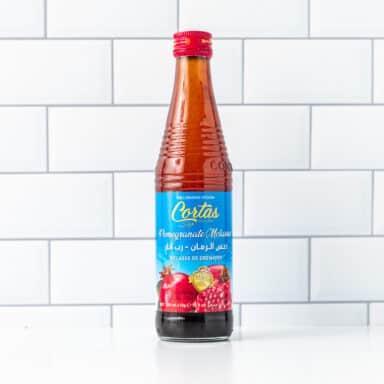
Harissa Paste (North African)
Harissa is a North African hot chili paste or sauce commonly eaten in Tunisia and Morocco whose main ingredients are chili peppers and paprika. This fiery red sauce is served as a condiment with many Tunisian dishes, particularly tagines.
Though most closely associated with Morocco, Tunisia and Algeria it is a standard ingredient of North African and Middle Eastern cuisines. I make my own moroccan harissa, give it a try!








